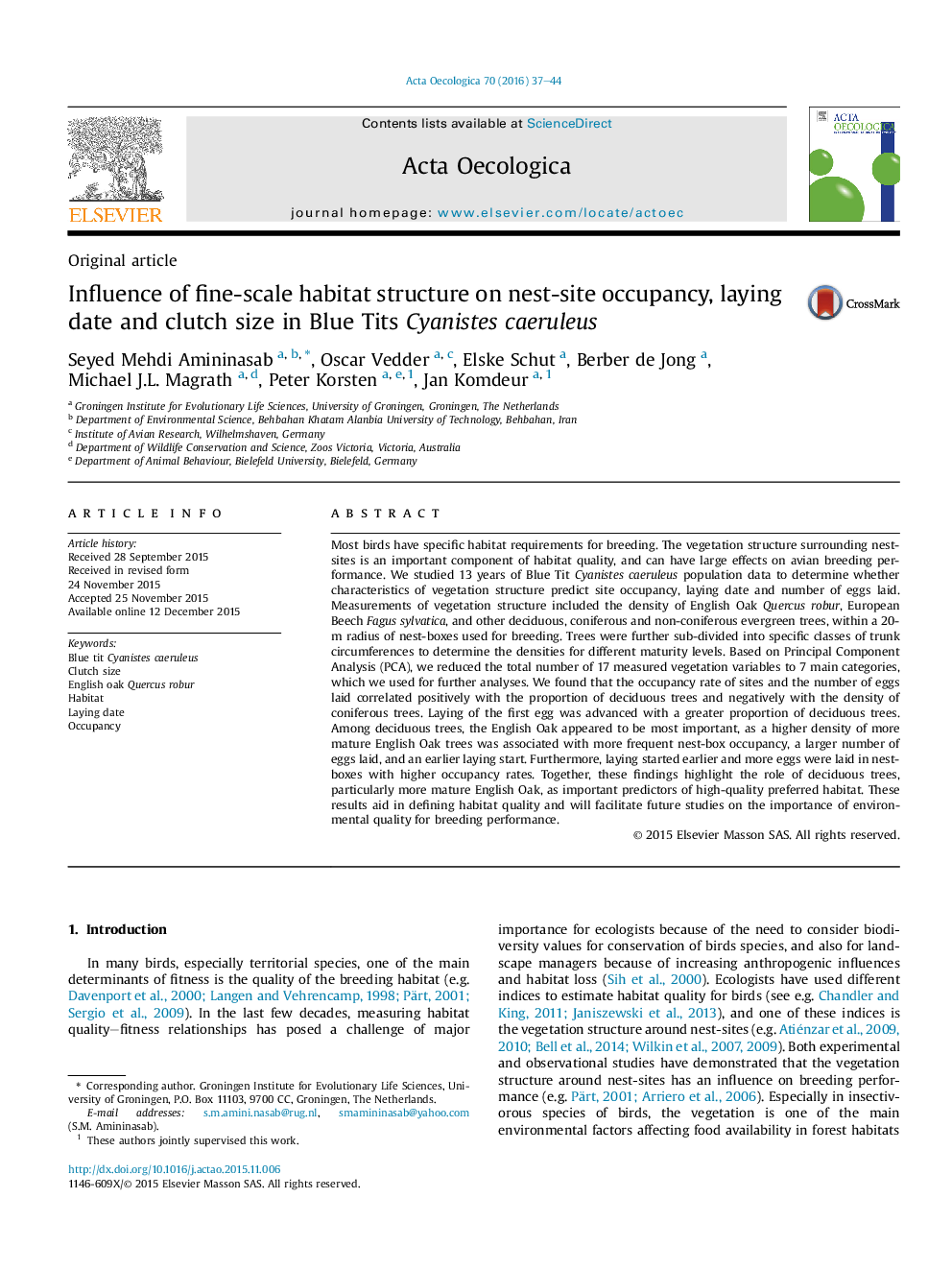| Article ID | Journal | Published Year | Pages | File Type |
|---|---|---|---|---|
| 4380798 | Acta Oecologica | 2016 | 8 Pages |
•We examined habitat-related occupancy, lay date and clutch size in Blue Tits.•In deciduous habitat with mature English Oaks breeding sites were more often occupied.•Birds also laid earlier, and clutches were larger, in this habitat type.•Hence, occupancy rate is a reliable indicator of the quality of breeding sites.
Most birds have specific habitat requirements for breeding. The vegetation structure surrounding nest-sites is an important component of habitat quality, and can have large effects on avian breeding performance. We studied 13 years of Blue Tit Cyanistes caeruleus population data to determine whether characteristics of vegetation structure predict site occupancy, laying date and number of eggs laid. Measurements of vegetation structure included the density of English Oak Quercus robur, European Beech Fagus sylvatica, and other deciduous, coniferous and non-coniferous evergreen trees, within a 20-m radius of nest-boxes used for breeding. Trees were further sub-divided into specific classes of trunk circumferences to determine the densities for different maturity levels. Based on Principal Component Analysis (PCA), we reduced the total number of 17 measured vegetation variables to 7 main categories, which we used for further analyses. We found that the occupancy rate of sites and the number of eggs laid correlated positively with the proportion of deciduous trees and negatively with the density of coniferous trees. Laying of the first egg was advanced with a greater proportion of deciduous trees. Among deciduous trees, the English Oak appeared to be most important, as a higher density of more mature English Oak trees was associated with more frequent nest-box occupancy, a larger number of eggs laid, and an earlier laying start. Furthermore, laying started earlier and more eggs were laid in nest-boxes with higher occupancy rates. Together, these findings highlight the role of deciduous trees, particularly more mature English Oak, as important predictors of high-quality preferred habitat. These results aid in defining habitat quality and will facilitate future studies on the importance of environmental quality for breeding performance.
